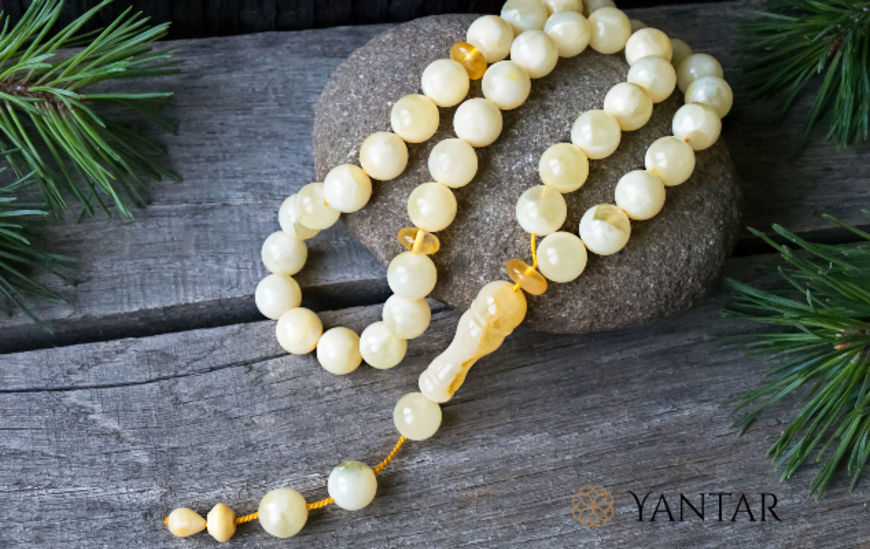The Significance of Prayer Beads in Islamic Devotion
In Islamic tradition, prayer beads, also known as "tasbih" or "misbaha," hold profound significance as spiritual tools for devout Muslims. These beads serve as a tangible aid in the practice of dhikr, or the remembrance of Allah, allowing believers to engage in repetitive recitations of prayers, praises, and supplications. In yantar.ae blog article, we delve into the rich history and spiritual significance of prayer beads in Islamic devotion.
Origins and History:
Prayer beads have been used in Islamic worship for centuries, with their origins dating back to the time of the Prophet Muhammad (peace be upon him). The Prophet himself is said to have used prayer beads, setting a precedent for their use among his followers. Over time, the design and materials of prayer beads have varied across different regions and cultures within the Islamic world.
Structure and Symbolism:
Traditional prayer beads consist of a string of beads, usually made from materials such as wood, semi-precious stones, or glass, with a larger bead or tassel at one end. The beads are typically arranged in sets of 33, 66, or 99, corresponding to the number of names or attributes of Allah in Islamic tradition. Each bead represents a particular phrase or invocation, allowing the worshipper to track their progress as they engage in dhikr.
The Practice of Dhikr:
Dhikr is an integral aspect of Islamic worship, involving the repetition of specific phrases or verses to maintain a state of mindfulness and spiritual connection with Allah. Prayer beads facilitate this practice by providing a tactile and visual aid, allowing believers to focus their thoughts and intentions as they recite the names of Allah or other sacred invocations.
Spiritual Benefits:
The use of prayer beads in dhikr is believed to have numerous spiritual benefits. It is said to purify the heart, strengthen one's faith, and foster a sense of inner peace and tranquility. By engaging in repetitive remembrance of Allah, believers seek to draw closer to the Divine and cultivate a deeper awareness of His presence in their lives.
Versatility and Adaptability:
While prayer beads are commonly associated with the recitation of specific phrases or prayers, they are also used for a variety of other purposes within Islamic devotion. Some believers use prayer beads to count the number of rakats (units of prayer) performed during their daily prayers, while others use them as a means of seeking forgiveness or guidance in times of need.
Cultural and Personal Significance:
Prayer beads hold cultural and personal significance for many Muslims, often being passed down through generations as family heirlooms or cherished gifts. They serve as tangible reminders of one's faith and devotion, accompanying believers on their spiritual journey through life.
In conclusion, prayer beads play a central role in Islamic devotion, serving as both a practical tool and a symbol of spiritual connection with Allah. Through the practice of dhikr, believers engage in a timeless tradition of remembrance and reverence, seeking to draw closer to the Divine and embody the teachings of Islam in their daily lives.


